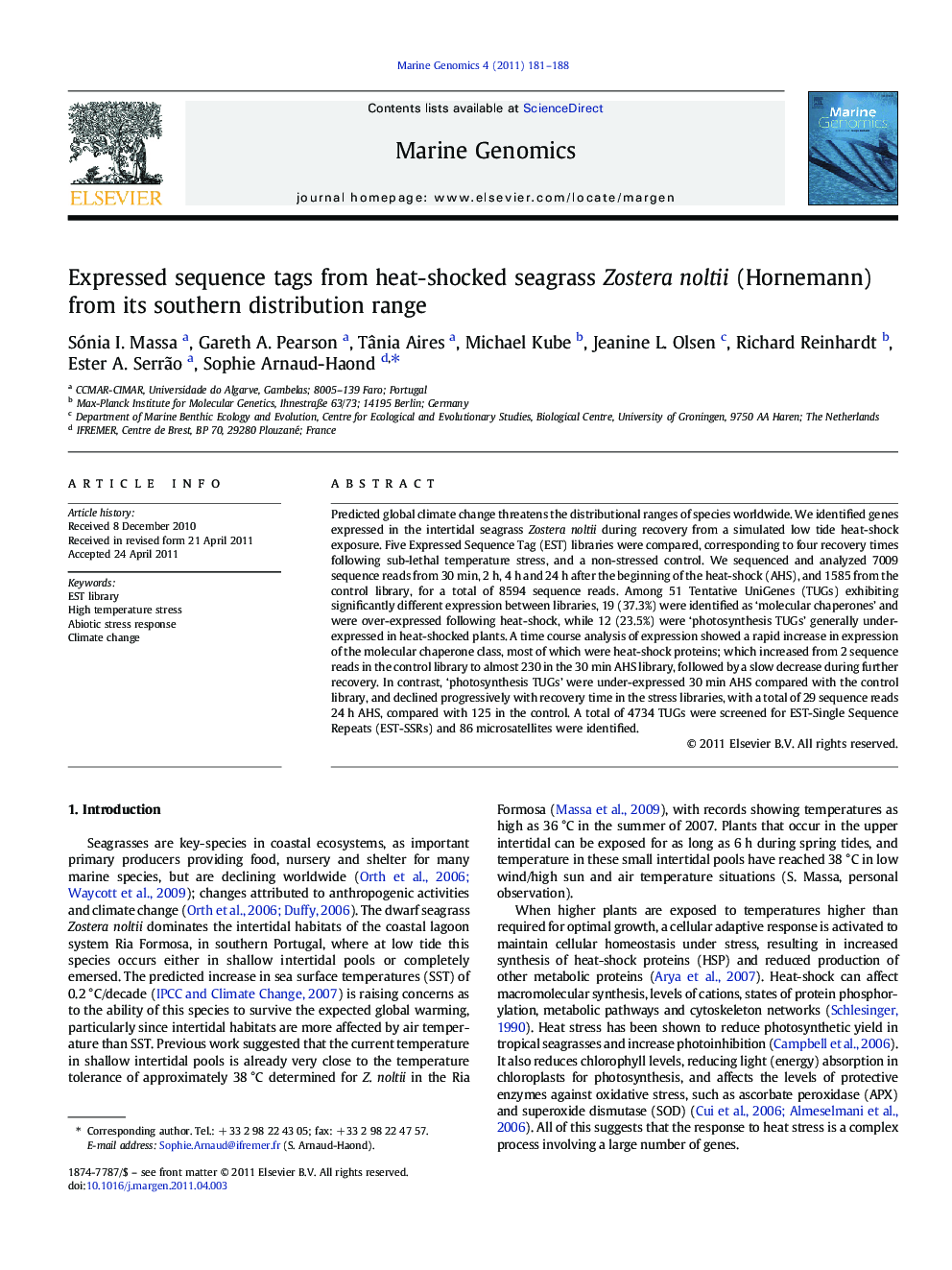| Article ID | Journal | Published Year | Pages | File Type |
|---|---|---|---|---|
| 2058311 | Marine Genomics | 2011 | 8 Pages |
Predicted global climate change threatens the distributional ranges of species worldwide. We identified genes expressed in the intertidal seagrass Zostera noltii during recovery from a simulated low tide heat-shock exposure. Five Expressed Sequence Tag (EST) libraries were compared, corresponding to four recovery times following sub-lethal temperature stress, and a non-stressed control. We sequenced and analyzed 7009 sequence reads from 30 min, 2 h, 4 h and 24 h after the beginning of the heat-shock (AHS), and 1585 from the control library, for a total of 8594 sequence reads. Among 51 Tentative UniGenes (TUGs) exhibiting significantly different expression between libraries, 19 (37.3%) were identified as ‘molecular chaperones’ and were over-expressed following heat-shock, while 12 (23.5%) were ‘photosynthesis TUGs’ generally under-expressed in heat-shocked plants. A time course analysis of expression showed a rapid increase in expression of the molecular chaperone class, most of which were heat-shock proteins; which increased from 2 sequence reads in the control library to almost 230 in the 30 min AHS library, followed by a slow decrease during further recovery. In contrast, ‘photosynthesis TUGs’ were under-expressed 30 min AHS compared with the control library, and declined progressively with recovery time in the stress libraries, with a total of 29 sequence reads 24 h AHS, compared with 125 in the control. A total of 4734 TUGs were screened for EST-Single Sequence Repeats (EST-SSRs) and 86 microsatellites were identified.
► Response to heat stress is very fast but gene expression returns to normal after 24 h. ► Photosynthesis-related genes were under-expressed after heat-shock. ► Heat-shock caused a quick rise in heat shock proteins and molecular chaperone expression.
